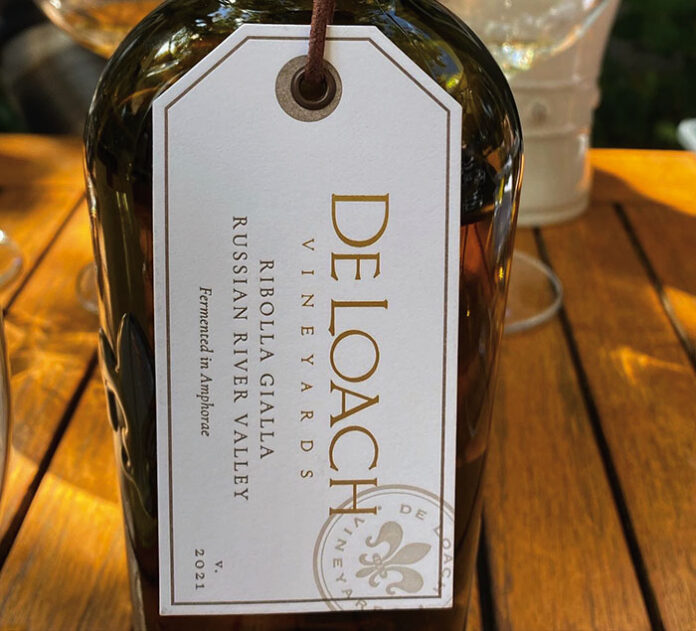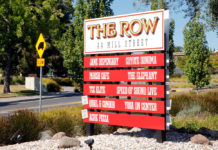After 20-plus years in the wine industry, I can admit that I am guilty of writing off a winery or brand or assuming I know it well enough, only to later realize that it has been so long since I’ve actually visited the winery, or tasted the wines, that I might be missing something.
This was exactly the case with DeLoach Vineyards which, I’m embarrassed to say, I hadn’t taken the time to visit or taste through many of their wines in over a decade.
When asked by friends coming to visit the region whether I would recommend the winery, I didn’t have much to say beyond the fact that I thought they made pretty good pinot noirs and chardonnays, but it had been a while since I’d visited.
Here’s the part where I admit how little I really knew about DeLoach, in particular about what has been happening at DeLoach over the past 10 to 15 years.
Firstly, DeLoach Vineyards is a part of the Boisset winery family and has been since 2003. While I knew the winery was a part of Boisset’s portfolio of brands, I wasn’t really aware of what that meant for the brand, the quality of the wines, etc., as I hadn’t taken the time to sit down and taste the breadth of DeLoach’s menu of wines since the early 2000s. *Before scolding me for being so out of touch, let me say in my own defense that there are over 400 wineries in Sonoma County and it’s impossible to visit them all, let alone revisit many on a regular basis.
Secondly, winemaking at DeLoach has been under the guiding hand of winemaker Brian Maloney, an avid believer in site expressive wines, the differences between Russian River Valley’s six “neighborhoods” and highlighting single vineyards, since 2007. The wines being made are interesting, expressive and multi-dimensional.
Lastly, if what one thinks about when one thinks of DeLoach is that they are a “big brand” winery that makes pinot noir and chardonnay (like I did), I think one will be as excited as I was to find out about the cool projects, amazing single vineyard wines, and increasingly sustainable and Earth-first focused practices at the winery. Additionally, most of the wines the winery produces these days are made in small quantities from as few as 50 cases to a few hundred, in the case of their vineyard designate wines.
Here are a few reasons to get excited about DeLoach Vineyards and DeLoach’s wines in 2022:
Certified
The winery is not just a certified sustainable and certified organic winery but is also one of just a handful of local wineries that are Demeter certified as a biodynamic vineyard and winery.
Iconic Vineyards
DeLoach makes over 20 vineyard designate wines from unique sites that include iconic vineyards such as Heintz, Stubbs, Van der Kamp and Saitone, with a large percentage of these wines coming from cool weather sites in the Green Valley, Petaluma Gap and Sonoma Coast AVAs. A couple of my personal favorites are the Hawk Hill Vineyard Chardonnay and Maboroshi Vineyard Pinot Noir.
Skin Contact
Among their offerings are a skin contact ribolla gialla and carignane that are aged in terracotta amphorae and that are phenomenal (these wines are made in very limited quantities, so they are generally sold out for part of each year).
Varietals Galore
They’ve got a diverse list of wines that includes not just pinot noir and chardonnay but pinot blanc, ribolla gialla, riesling, carignane and zinfandel.
Tasting Experience
The winery offers an appellation-focused tasting experience that allows customers to taste through and learn about the differences between the characteristics in wines from different Sonoma County AVAs. They also offer a self-guided tour that allows guests to explore the estate’s 20 acre organic and biodynamic farm, which includes a half-acre culinary garden, and grazing chickens, sheep and goats.
Earth-Friendly
They are actively pursuing more ways to reduce the winery’s environmental footprint, increase their biodynamic and regenerative agriculture practices, and to support their local community. This includes everything from how they treat and compensate their employees, to how they work with other local businesses, to which causes or initiatives they choose to support financially. One example is the winery’s “Vinthropic” line of wines that was created to help fight against hunger. One hundred percent of Vinthropic’s proceeds go to benefit Sonoma County’s Redwood Empire Food Bank.









